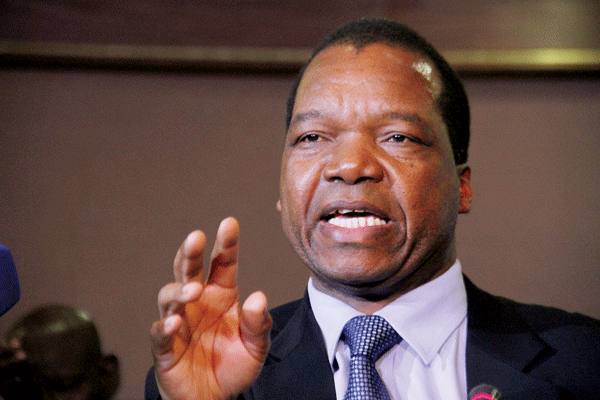
BY FIDELITY MHLANGA
ZIMBABWE’S banking sector is skating on thin ice due to a illiquidity crunch that has drastically reduced the financial institutions’ capacity to lend following the reintroduction of a local currency, a report has revealed.
According to the report by brokerage research firm IH securities titled, The Zimbabwe Banking sector: Navigating a challenging monetary space, released on Friday, the currency reforms created a mismatch between foreign currency-denominated assets and liabilities on some banks’ balance sheets.
The distortions have stifled the financial institutions’ lending capacity, the report says.
“The floating of the Zimbabwe dollar resulted in the translation of foreign currency denominated assets at the interbank rate,” reads part of the report.
“In cases where the banks have net liabilities denominated in foreign currency, [this] resulted in a larger increase in liabilities than assets.
“This will result in the decline in the capital of the bank ensuing a reduction in the lending capacity of the bank.
“As shown in the proforma 31 December 2018 balance sheets, Agribank and Ecobank would have been insolvent, further increasing liquidity risk within the banking sector.”
- Chamisa under fire over US$120K donation
- Mavhunga puts DeMbare into Chibuku quarterfinals
- Pension funds bet on Cabora Bassa oilfields
- Councils defy govt fire tender directive
Keep Reading
In June, the government made the real time gross settlement (RTGS) and bond notes the country’s sole legal tender, ending a decade of dollarisation. The move was seen as another step towards the relaunching of the Zimbabwe dollar.
IH said in order for financial institutions to resume lending and improve funded income under the new dispensation, the banking sector would need to increase capital requirements.
It warned that the minimum capital requirement for commercial banks, which was set at US$100 million to be achieved by 2020, had effectively been reduced to US$10 million after the adoption of the mono currency regime.
“The implication is that the real value of capital is now US$10 million, which in our view, will cause most banks to re-assess risk and their lending capacity and further strain liquidity,” it added.
“Another point to note is that the assumption of the US$1,2 billion of legacy debt at a 1:1 by the central bank will result in the physical mopping-up of $1,2 billion from the banking sector, also effectively straining liquidity.”
IH said the indication that the Reserve Bank of Zimbabwe (RBZ) had no plans to increase the minimum capital requirements from $100 million after the promulgation of the local currency at a time when only four banks had reached core capital over and above the 2020 targeted prescribed minimum capital requirements of $100 million, spelt disaster.
The firm forecasts softening profitability and return on equity (ROEs).
It said a number of commercial banks might not be able to meet the $100 million target using retained earnings and would be forced to turn to shareholders for fundraising.
“According to the Reserve Bank’s supervision annual report for 2018, ZB and Metbank were the lowest capitalised banks at $69.86 million and $65.88 million core capital, respectively,” the report added.
“With retained earnings possibly being inadequate in terms of increasing the core capital to $100 million, we anticipate that some banks might need to turn to their shareholders for additional capital support through corporate actions such as rights offers and or consolidation for the banks that have common majority shareholders.”
IH said the $100 million minimum capital requirement for banks compared well with that of other countries in the region.
For instance, Angola requires banks to have a minimum capital of US$21,75 million.
Meanwhile, IH securities said the fact that funding for Zimbabwe’s banking sector continued to be dominated by transitory demand deposits contributing 64,94% to the total deposits meant there was a large liquidity mismatch between long-term assets created through the use of funded income.
Of the total $10,32 billion deposits registered within the banking sector as at December 31, 2018, the nostro foreign currency balance contributed 6,53%, translating to $673,81 million.
IH said for the interbank foreign currency market rates to converge with those on the parallel market, the RBZ must not play a significant role, hence the need for reforms.
“Reforms include the liberalisation of the market by allowing foreign currency generating companies to directly offload the foreign currency that is currently being retained by the central bank onto the market to increase liquidity of the market,” the firm said.
“Additionally, in line with the desire for the convergence of the parallel and formal rates, subsidies for specific goods or sectors (e.g. fuel or medicine) should be channelled through the budget, not through administered exchange rate,” IH said.
“We believe that under the right conditions, a functioning interbank market could provide a strong source of non-funded income for the banking sector — it is our view that the leading beneficiaries would be institutions that bank exporting clients creating a natural source of foreign currency liquidity — this would mostly be the international banks who are generally unlisted on the Zimbabwe Stock Exchange with the exception of First Capital Bank (formerly Barclays Bank).”
Zimbabwe has been experiencing a liquidity crunch for a number of years due to the poor performance of the economy.











